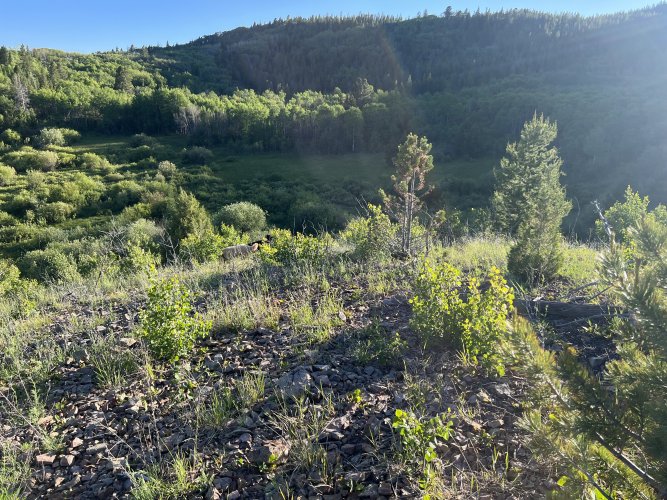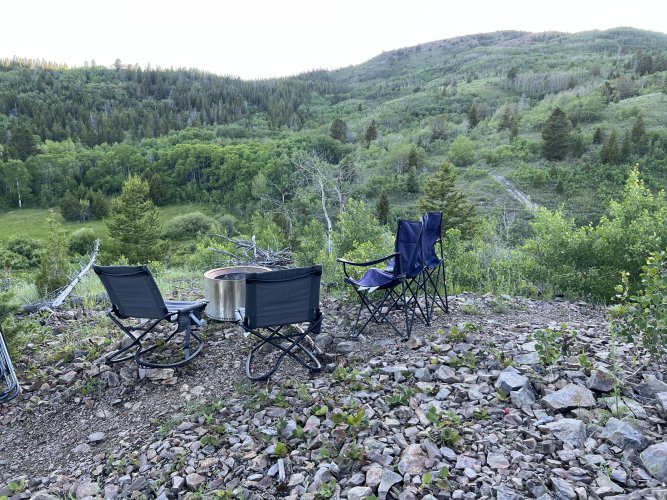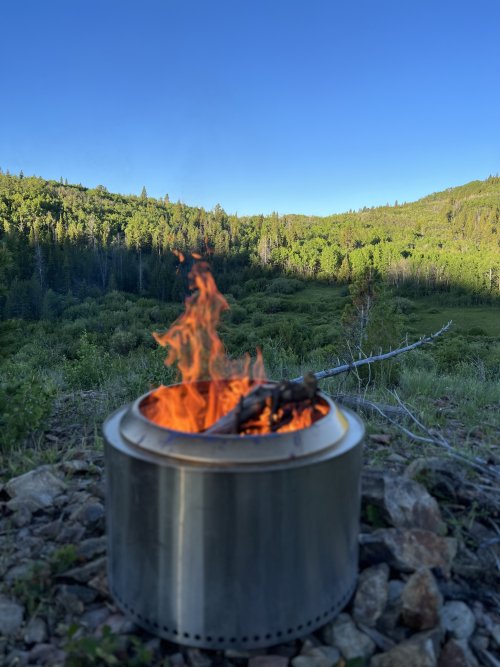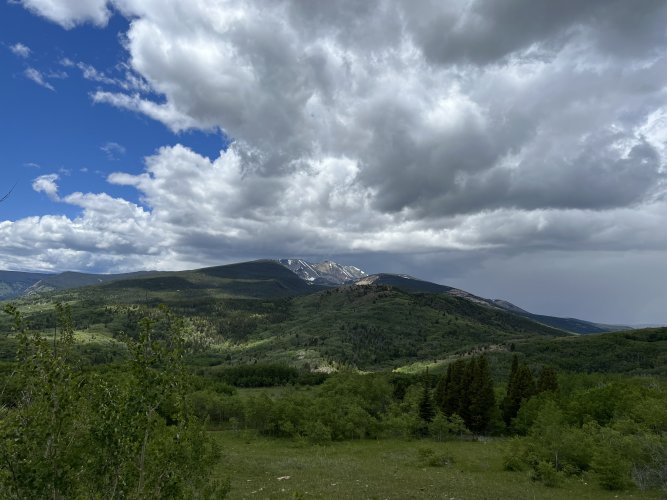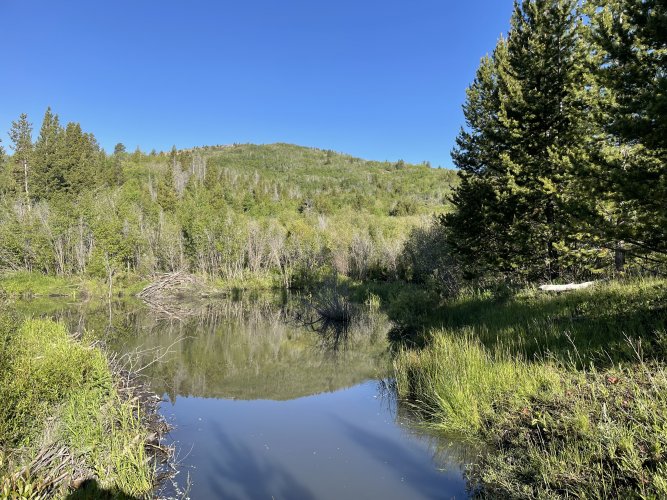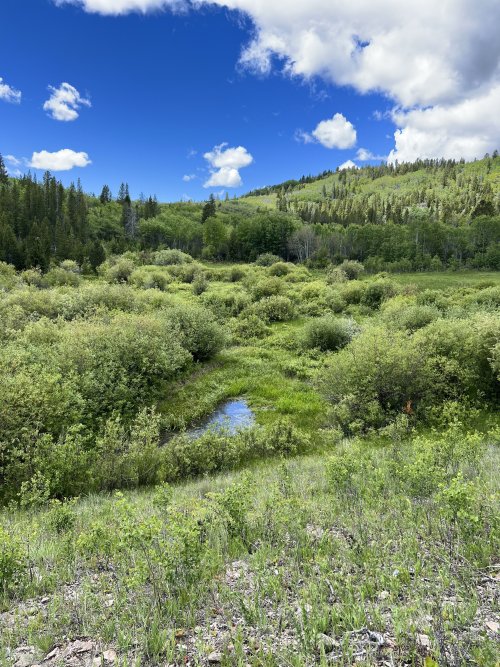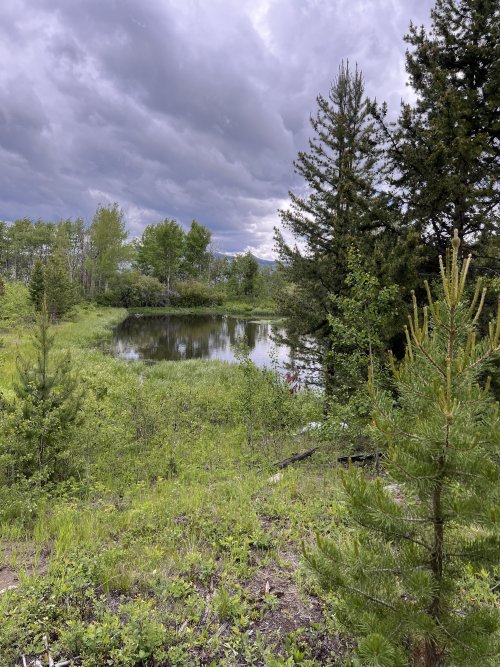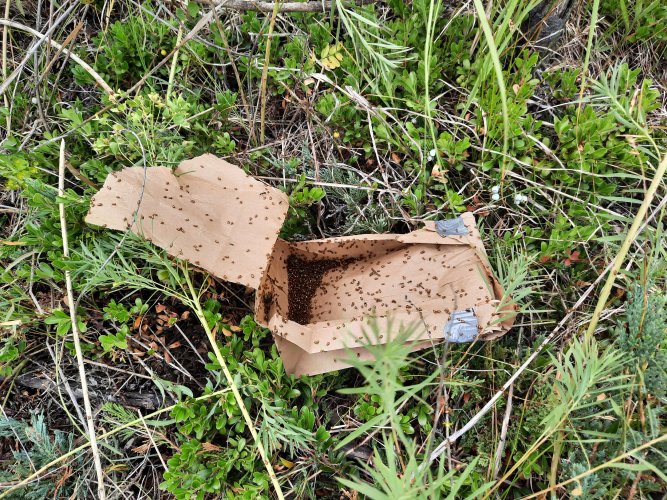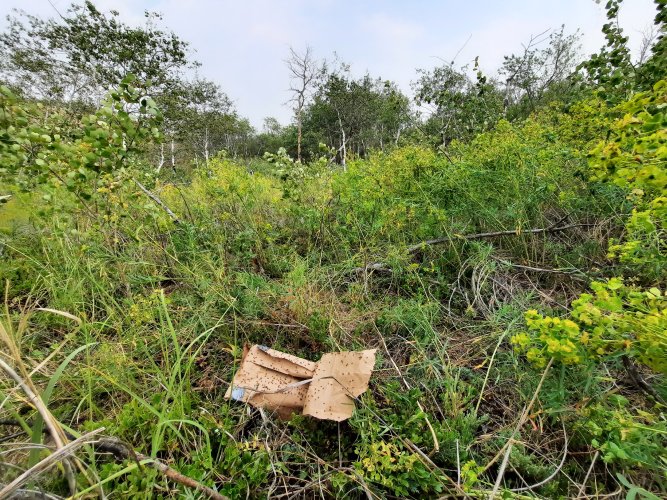Hammsolo
Well-known member
- Joined
- May 16, 2020
- Messages
- 1,659
My wife and I recently purchased 40 of heaven in Montana about 25 minutes off of my hometown, Anaconda. This was a huge blessing due to the fact that I purchased it for pennies on the dollar from my Mom’s friend, with the agreement we would conserve and improve the land for native species. It is a dream setting.
The land sits at the very end of a two track leading into huge expanses of public land. It is primarily the lower area of a bowl filled with a large creek, beaver ponds, and riparian habitat. There are loads of aspen groves and fields, but there are lots of noxious weeds to deal with.
Our goal is to make our land prime habitat. We also are in contact with like minded neighbors, all 40 acre parcels or larger, and dream of getting them all on the same page. I am in contact with RMEF, and local government groups about weed control. I also want to support the rehabilitation of the adjoining public land. I am open to any and all ideas. Who could support this? What should we do? Tips, tricks, strategies? I am looking into bugs, sprays, prescribed burns… The aspen grows are in okay shape. There are loads of standing dead, and blow down.
This land will continue on after us also. We will do what it takes legally to make sure it is never subdivided, or developed. We will be building a cabin and small shop in a quite hidden location. There is a spot overlooking the bottom of the bowl that is tempting, but that wouldn’t walk the talk.
The land sits at the very end of a two track leading into huge expanses of public land. It is primarily the lower area of a bowl filled with a large creek, beaver ponds, and riparian habitat. There are loads of aspen groves and fields, but there are lots of noxious weeds to deal with.
Our goal is to make our land prime habitat. We also are in contact with like minded neighbors, all 40 acre parcels or larger, and dream of getting them all on the same page. I am in contact with RMEF, and local government groups about weed control. I also want to support the rehabilitation of the adjoining public land. I am open to any and all ideas. Who could support this? What should we do? Tips, tricks, strategies? I am looking into bugs, sprays, prescribed burns… The aspen grows are in okay shape. There are loads of standing dead, and blow down.
This land will continue on after us also. We will do what it takes legally to make sure it is never subdivided, or developed. We will be building a cabin and small shop in a quite hidden location. There is a spot overlooking the bottom of the bowl that is tempting, but that wouldn’t walk the talk.




